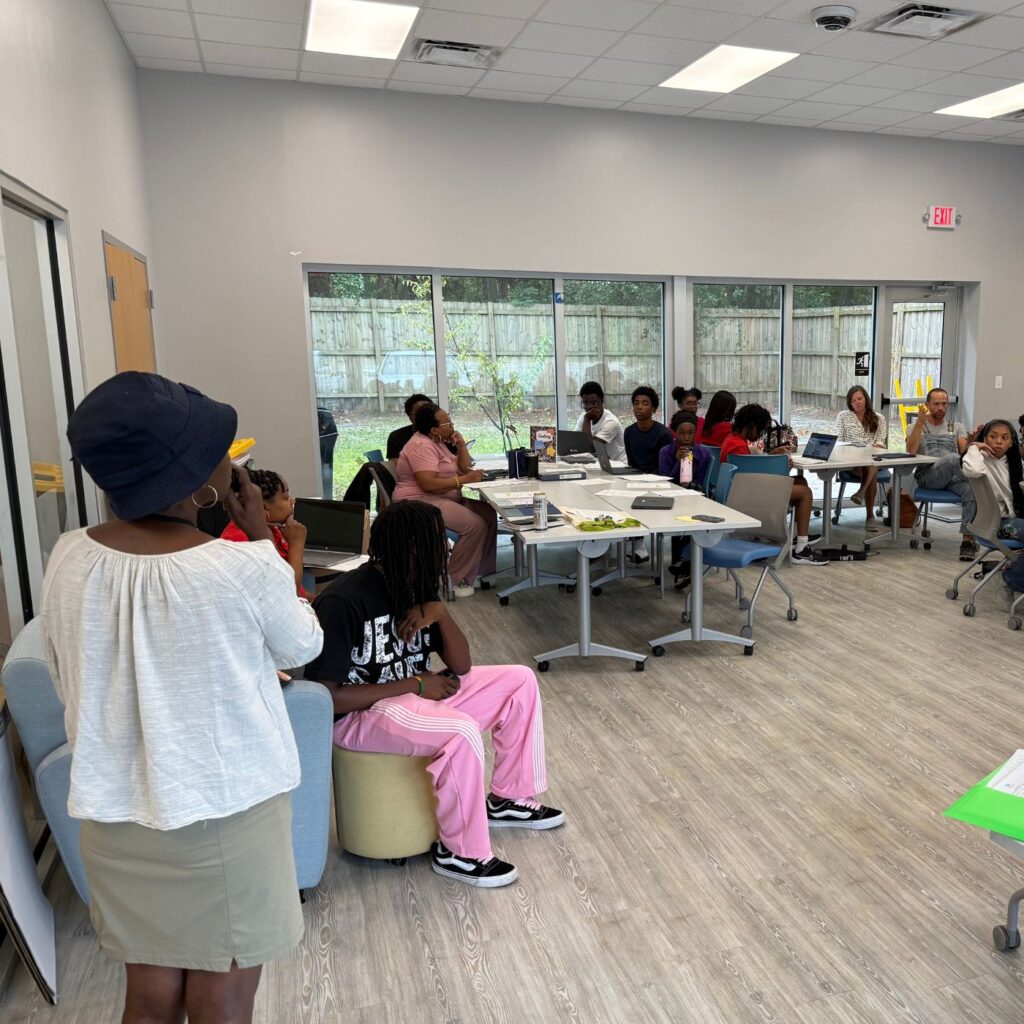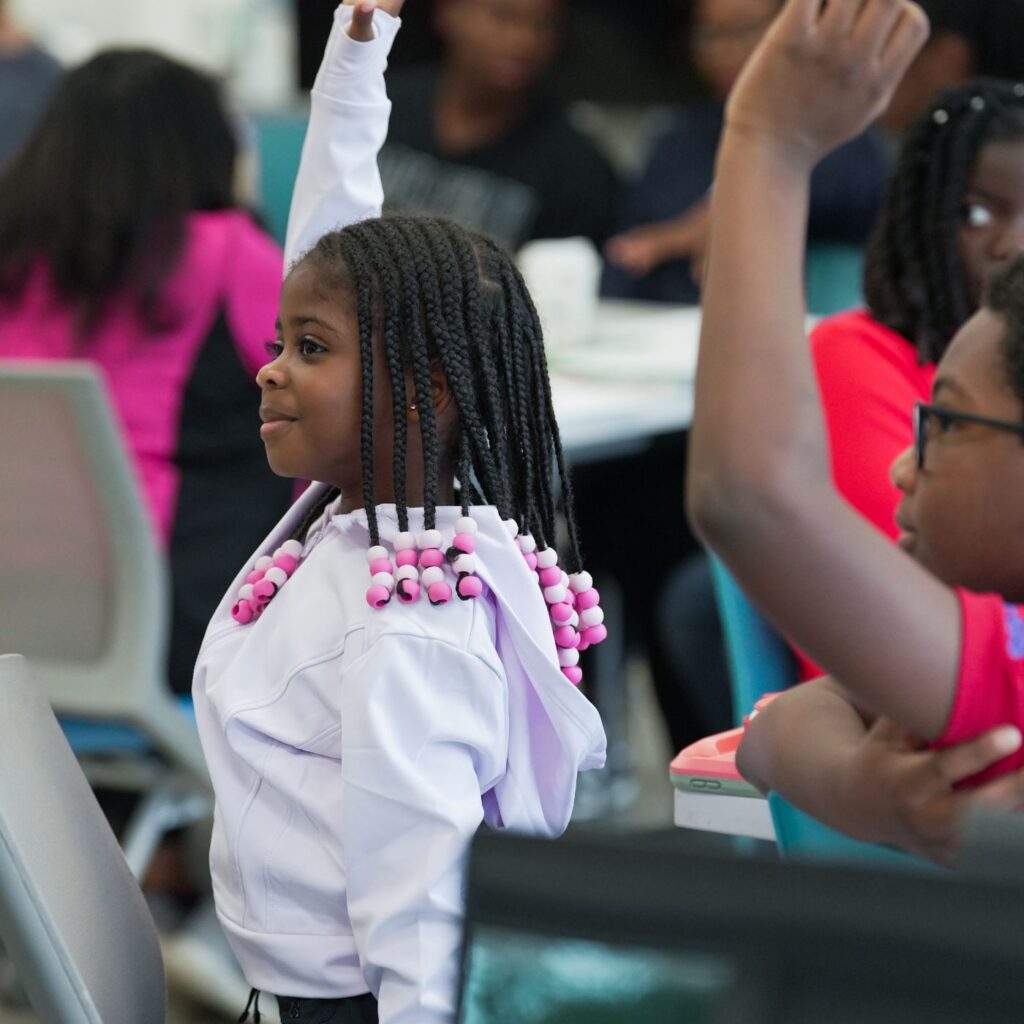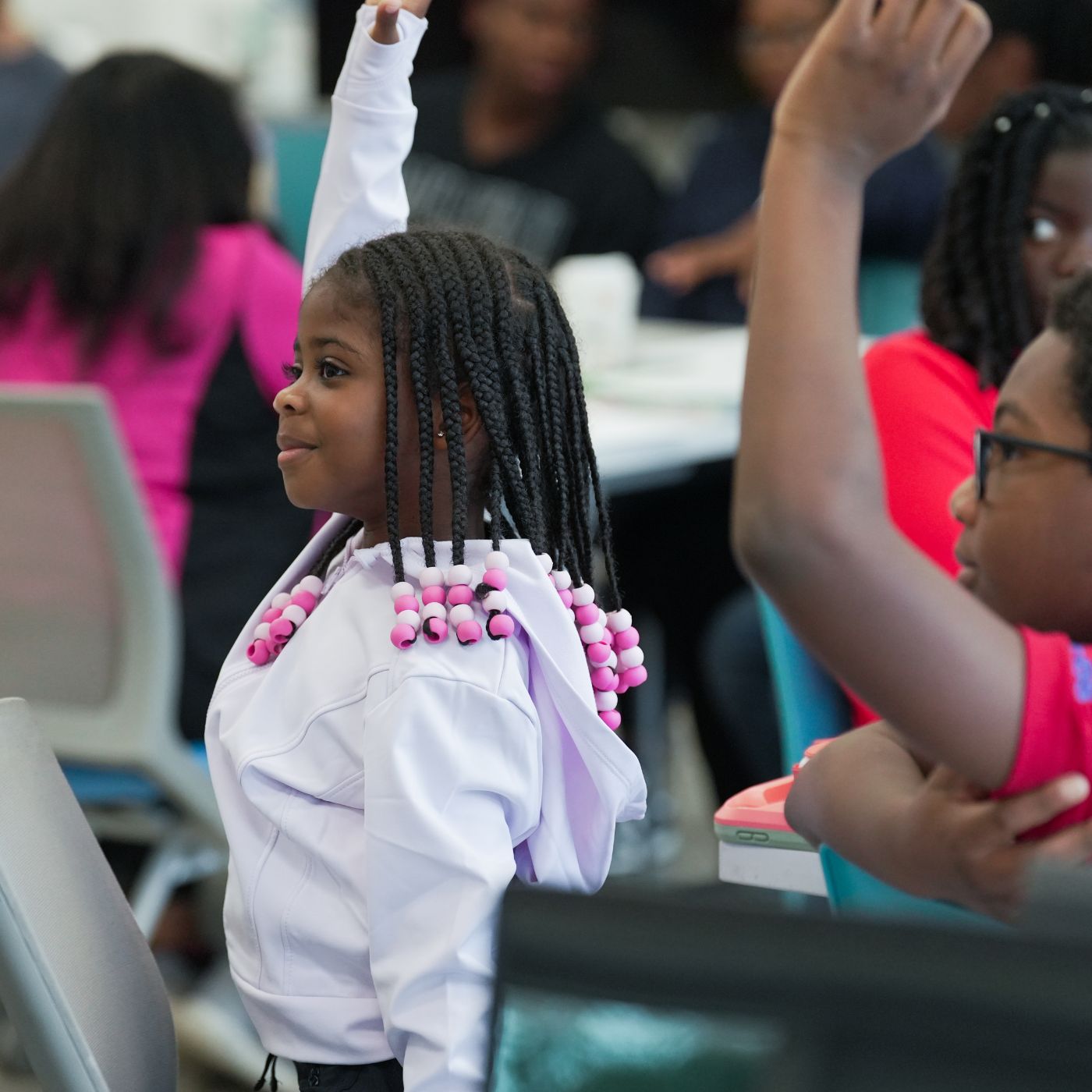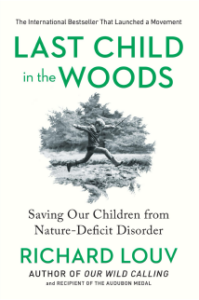November 3, 2025
Too often, youth programs are designed without input from the very people they’re meant to serve. In Springfield, Project One Health JAX–led by the Partnership for Child Health–is taking a different approach by listening directly to local teens and building programming around their insights.
This fall, a focus group with middle and high school students from the I’M A STAR Foundation in Jacksonville, FL, invited youth to share what they want to learn, explore, and experience in nature.
The Partnership for Child Health, Sanctuary on 8th Street, Just Food Network and Springfield Preservation and Restoration (SPAR) facilitated the discussion as part of the development phase for the Springfield Youth Ecological Stewardship Program – a Project One Health initiative. The young participants responded with curiosity, vulnerability, and a clear desire to be included in shaping something meaningful.
“Centering youth voices in this work isn’t just a nice idea – it’s essential. Their voices remind us why this matters,” said Dr. Laureen Husband with the Partnership for Child Health, who helped facilitate the discussion and is leading the program development in Springfield.
Through open dialogue and creative prompts, young people shared what excites them about being outdoors, what worries them, and what they want to learn. The conversation covered a wide range of themes, from mental wellness and food justice to climate change and community pride.
“When one student said, ‘When I’m outside, I feel like I can breathe again. Inside feels small — nature feels big,’ it stopped me,” Dr. Husband noted. “It was a reminder that nature is not just our classroom – it’s our healing space. Our young people see what adults too often forget: that climate, food, and community health are inseparable.”
The following summary captures the voices, insights, and reflections shared during the focus group:
1. Rediscovering Connection to Food and Nature
The discussion began with a simple question: “What did you eat yesterday?” From this small entry point, youth participants unraveled profound insights about disconnection from food origins. When one youth answered, “Pizza… from the freezer,” and another added, “From Walmart,” facilitators gently guided them toward understanding the larger food chain. One adult asked, “Do you think Papa John’s goes to the farm when they need pizza ingredients?” prompting laughter and reflection.
This exercise illuminated how distant daily life has become from ecological cycles. Yet, as the conversation evolved, participants realized—sometimes with surprise—that “it all comes from the Earth.” This theme of rediscovering food as a living, natural relationship became foundational to the stewardship program’s ethos. No matter what we eat, we are engaged with nature through the food we eat.
2. The Biosphere and Human Interdependence
As the group transitioned from food to the concept of the biosphere, facilitators introduced an important realization: that “every single atom in this building came from nature.” Students paused to take that in, connecting even the materials of their environment—glass, metal, paper—to the Earth itself.
This revelation challenged the false divide between humans and nature. One participant summarized beautifully, “Humans are over here and nature’s over there—but actually, the human economy exists within the biosphere.” This insight transformed the tone of the conversation from curiosity to humility. Youth began to recognize that stewardship isn’t about helping nature as an outsider—it’s about participating wisely in the system they already belong to.
3. Facing Fears and Finding Courage in Nature
When asked what they feared in nature, the room came alive with responses: “Possums.” “Rats.” “Snakes.” “Falling out of trees.” Yet laughter and camaraderie softened the fear. One child admitted, “I’m afraid of the night in the woods,” while another reflected, “I love trees, but I’m scared to climb them.”
Miranda Pridgen, an avid hiker and a forest educator helping to facilitate the discussion, reassured the group that “when I enter those environments, I’m aware that’s where animals live, and I’m a guest there.” This segment captured a core principle of the program: transforming anxiety into agency through experience. As one participant concluded, “If you know what to do when you see a bear or snake, you’ll be fine.”
4. Stewardship as a Way of Living
The concept of stewardship resonated deeply with both youth and adults. When youth were asked if they were good stewards of their neighborhood, several nodded. A facilitator emphasized, “You are all stewards of Jacksonville, regardless of what neighborhood you live in.”
This discussion elevated environmental care from a project to a moral identity. It reframed picking up trash, protecting trees, and learning history as acts of civic pride. One student summarized it well: “A good steward takes care of their neighborhood.”
5. Learning Through Curiosity and Wonder
The conversation evolved into spontaneous wonder as the students began to ask questions like, “How do animals feel about development?” and “Do animals think about humans?” This opened philosophical doors that bridged ecology and empathy.
There was also a longing for deeper scientific understanding. One student suggested that program curriculum should include “revisiting the water cycle and the basics we forget over time,” to connect science education and survival skills. Another student proposed “outdoor schools” as a way to make learning experiential and fun. This theme underscored the youth’s innate desire to merge curiosity with action.
6. Preparing for Resilience and Community Survival
The dialogue turned practical when participants discussed what to do during hurricanes or crises. Facilitators reminded them, “If our bridges go down, we only have three days’ worth of food in Jacksonville’s grocery stores.” The group explored survival skills such as purifying water and preserving food. This pragmatic thread tied environmental learning to survival and community resilience. The youth realized that “people who can grow and preserve food aren’t scared—they’re prepared.”
7. Place-Based Identity and Environmental Justice
The group recognized that the Springfield neighborhood—and Jacksonville at large—is not only a physical place but a living ecosystem with a story. Youth reflected on how the St. Johns River once supported abundant fish and how pollution has changed it. They expressed interest in “hearing from elders about how our land has changed over time.”
Through this, environmental stewardship became intertwined with cultural heritage and justice. Understanding the land meant understanding themselves and their community’s history of resilience and neglect. “We have one of the largest river systems in the U.S.—how do we care for it?”
These insights are now actively shaping the curriculum and priorities for the Project One Health Springfield program. Dr. Husband noted, “We are using the words and interests of the youth to build out a place-based curriculum and outreach strategy. This conversation gave us themes—Grow Your Own Food, Fearless in Nature, Trail Stewardship, Eco-Wellness, and Climate Guardians—and we’ll be building around those with community partners, family engagement, and local assets.”
Project One Health JAX is a community-based initiative of the Winston Family Foundation that aims to reduce screen time and improve health by connecting children and families to nature. The Springfield program is one of four place-based efforts launching in Jacksonville’s urban core. By centering youth voices from the start, it’s helping to ensure the programming is not only effective—but relevant, engaging, and rooted in real experience.


















